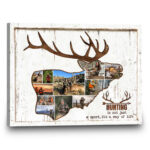I. The Benefits of Buying Second-Hand: Sustainability and Savings
II. How to Successfully Shop for Second-Hand Items: Tips and Tricks
III. Popular Platforms for Second-Hand Shopping: Where to Find the Best Deals
The Benefits of Buying Second-Hand: Sustainability and Savings
Hey there! Have you ever thought about shopping second-hand? If not, you’re missing out on some fantastic benefits that can make a big difference for both your wallet and the planet. Let’s dive into why buying second-hand is not just a trend, but a smart and sustainable choice!
1. Sustainability: A Small Change with a Big Impact
First off, let’s talk about sustainability. Every time you choose to buy second-hand, you’re making a conscious decision to reduce waste. Did you know that the fashion industry alone is one of the biggest polluters in the world? By opting for pre-loved items, you’re helping to:
- Reduce landfill waste: Every year, millions of tons of clothing and goods end up in landfills. By buying second-hand, you extend the life of these items and lessen the burden on our planet.
- Conserve resources: Producing new items requires a lot of water, energy, and raw materials. Buying second-hand means less demand for new production, which conserves those precious resources.
- Support a circular economy: Second-hand shopping promotes a cycle where items are reused and repurposed, which is far better for the environment than the traditional linear model of “take, make, dispose.”
2. Savings: Keeping Your Wallet Happy
Now let’s talk about your finances! One of the most appealing aspects of buying second-hand is the savings. Whether you’re looking for clothing, furniture, or electronics, you can often find incredible deals that won’t break the bank. Here’s why it pays off:
- Lower prices: Second-hand items are typically much cheaper than their brand-new counterparts. You could save anywhere from 30% to 90% on various items!
- Unique finds: When you shop second-hand, you’re less likely to run into someone wearing the same outfit as you or having the same piece of furniture. You can discover unique and vintage items that reflect your personal style.
- Budget-friendly shopping: With the money you save from buying second-hand, you can allocate those funds towards other essentials, experiences, or maybe even a little splurge on something special!
3. Supporting Local Communities and Charities
Another fantastic benefit of second-hand shopping is the opportunity to support local businesses and charities. Many thrift stores and consignment shops are community-oriented, and your purchases can help fund local initiatives or charitable organizations. This means your shopping habit can contribute to a greater good!
4. A Fun Adventure!
Lastly, shopping for second-hand items can be a fun and rewarding adventure. The thrill of the hunt, finding hidden gems, and maybe even scoring a vintage treasure can make for an exciting day out. It’s not just shopping; it’s an experience!
So, next time you’re considering making a purchase, think about the benefits of buying second-hand. You’ll save money, make a positive impact on the environment, support your community, and have a great time doing it. What’s not to love?
How to Successfully Shop for Second-Hand Items: Tips and Tricks
Shopping for second-hand items can be a delightful adventure! Not only can you uncover unique treasures, but you can also save money while being kind to the planet. To help you make the most of your second-hand shopping experience, here are some handy tips and tricks.
1. Set a Budget
Before you dive into the world of second-hand shopping, it’s wise to set a budget. This helps you stay focused and prevents impulse buys. Remember, just because something is cheaper doesn’t mean it’s a good deal! Having a clear spending limit will keep you grounded.
2. Know What You’re Looking For
While the thrill of the chase is part of the fun, having a general idea of what you want can help narrow down your search. Make a list of specific items or categories you’re interested in, such as:
- Clothing
- Furniture
- Books
- Electronics
This approach saves time and keeps your shopping trip focused.
3. Check the Condition
When you’re browsing second-hand items, always take a moment to examine the item closely. Here are some points to consider:
- Look for damage: Check for any stains, tears, or cracks that may affect the item’s usability.
- Test it out: For electronics, plug them in and see if they work. For clothes, try them on if possible.
- Smell it: Sometimes, items can have lingering odors. Make sure it’s something you can live with!
4. Negotiate the Price
One of the perks of shopping second-hand is the potential for haggling! Don’t be afraid to negotiate the price, especially if you notice any flaws or if you’re buying multiple items. A friendly conversation can often lead to a better deal!
5. Be Patient
Second-hand shopping is all about patience. You may not find exactly what you’re looking for on your first visit, but that’s perfectly okay! Like a treasure hunt, sometimes the best finds come when you least expect them. Keep checking back or explore different stores to expand your options.
6. Don’t Forget to Clean
Once you’ve found your second-hand gem, it’s essential to give it a thorough cleaning. Depending on the item, this could involve washing clothes, wiping down furniture, or sanitizing electronics. This step is crucial, especially for clothing and kitchenware, to ensure they are fresh and ready for use.
7. Have Fun!
Most importantly, have fun while you shop! Embrace the unexpected and enjoy the thrill of finding something unique. Whether it’s a vintage dress or a quirky piece of decor, each second-hand item has its own story.
Wrap Up
Second-hand shopping is about more than just saving money; it’s an opportunity to discover unique items while contributing to a more sustainable future. Armed with these tips and tricks, you’ll be well-equipped to navigate the world of pre-loved treasures. Happy hunting!
Popular Platforms for Second-Hand Shopping: Where to Find the Best Deals
Finding great second-hand items is easier than ever, thanks to a wealth of online platforms and local venues. Whether you’re looking for vintage clothing, furniture, or unique collectibles, the right platform can help you score incredible deals while also supporting sustainability. Let’s dive into some of the most popular options for second-hand shopping, so you can start your treasure hunt with confidence!
1. Online Marketplaces
Online marketplaces are a fantastic way to browse a vast array of second-hand goods from the comfort of your home. Here are a few favorites:
- eBay: A classic in the second-hand game, eBay allows you to bid on items or buy them outright. You can find everything from electronics to antiques. Plus, the auction feature adds an element of excitement!
- Facebook Marketplace: This platform connects you with local sellers, making it easy to find deals in your area. You can arrange for pick-ups and even negotiate prices directly with the seller.
- Craigslist: While it’s been around for a while, Craigslist can still be a goldmine for second-hand goods. Just remember to meet in public places and trust your instincts when dealing with strangers.
2. Specialty Apps
In recent years, a variety of apps dedicated to second-hand shopping have gained popularity. These platforms often cater to specific niches, making it easier to find exactly what you’re looking for:
- Depop: Perfect for fashion enthusiasts, Depop is a trendy app focused on second-hand clothes, accessories, and vintage finds. Its social media-like interface allows you to follow sellers and discover new styles through a community of fashion lovers.
- Poshmark: Similar to Depop, Poshmark is another fashion-focused platform with a twist. Users can host virtual “Posh Parties” where specific items are shared, making it a fun way to both shop and sell!
- OfferUp: This app focuses on local buying and selling, making it easy to find items nearby. You can chat with sellers and even arrange for delivery in some cases, adding convenience to your shopping experience.
3. Thrift Stores and Consignment Shops
Don’t forget about the good old-fashioned thrift store! These brick-and-mortar shops are treasure troves filled with second-hand gems. Here are some tips for maximizing your thrift store visits:
- Frequent Visits: Inventory at thrift stores changes regularly, so visiting often increases your chances of finding something special.
- Be Patient: Sometimes, treasure hunting requires time and effort. Be prepared to sift through items to uncover hidden gems.
- Check Local Consignment Shops: These shops often carry high-quality items, from clothing to furniture, that have been gently used. They can be pricier than thrift stores but typically offer better quality.
4. Vintage and Antique Markets
If you have an eye for unique pieces, vintage and antique markets are well worth a visit. These markets often feature curated selections of items from various eras. You can find everything from mid-century furniture to retro clothing. Plus, you’ll enjoy the thrill of discovering one-of-a-kind items while supporting local vendors!
Conclusion
Whether you prefer online shopping or hitting the pavement at local thrift stores, there’s never been a better time to explore the world of second-hand shopping. Each platform offers its own unique charm and selection, so don’t hesitate to try a combination of these options. Happy hunting, and may you find many beautiful bargains!










Comments